|
Sandro Botticelli.org, welcome & enjoy!

|
|
Here are all the paintings of Charles Wilson Peale 01
| ID |
Painting |
Oil Pantings, Sorted from A to Z |
Painting Description |
| 74096 |
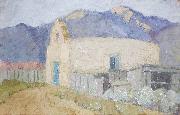 |
Adobe Church |
Adobe Church" by Cordelia Wilson, oil painting
Date undated, ca. 1915-1920s
cyf |
| 50495 |
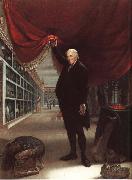 |
Artist in the Museum |
mk212
1822
Oil on canvas
263.5x200.1cm
|
| 4266 |
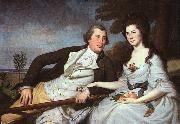 |
Benjamin and Eleanor Ridgely Laming |
1788
National Gallery of Art, Washington DC |
| 45210 |
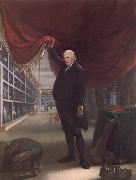 |
Der Kunstler in Seinem Museum |
mk181
1822
Philadephia
|
| 45243 |
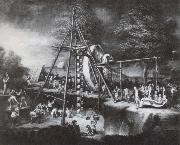 |
Die Ausgrabung eines Mastodon |
mk181
1806
Baltimore
|
| 45321 |
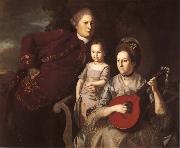 |
Die Familie Edward Lloyd |
mk181
1771
Ol auf Leinwand
121.9x146cm
|
| 4264 |
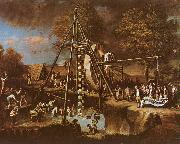 |
Disinterment of the Mastodon |
1806-08 |
| 50507 |
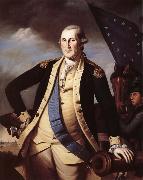 |
Georg Washington |
mk212
c.1780-82
Oil on canvas
127x101.6cn
|
| 73380 |
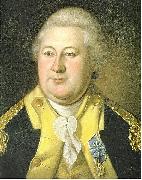 |
Henry Knox by Peale |
Date ca. 1784
cyf |
| 45320 |
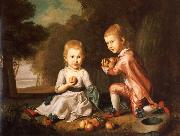 |
Isabella und John Stewart |
mk181
um 1775
Ol aufLeinwand
94x124cm
|
| 4265 |
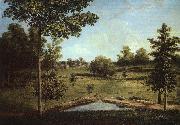 |
Landscape Looking Towards Sellers Hall from Mill Bank |
1818 |
| 50481 |
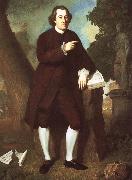 |
Man |
mk212
200.8x147.1cm
|
| 84258 |
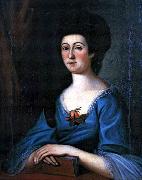 |
Portrait of a lady |
18th century
Medium Oil
cyf |
| 83336 |
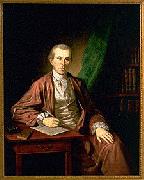 |
Portrait of Benjamin Rush |
1783(1783)
Medium Oil
cyf |
| 4260 |
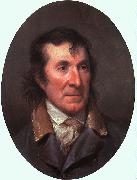 |
Portrait of Gilbert Stuart |
1805
New York Historical Society |
| 77016 |
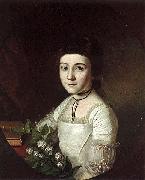 |
Portrait of Henrietta Maria Bordley at age 10 |
1773(1773)
Medium Oil on canvas
cyf |
| 76133 |
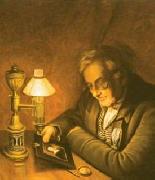 |
Portrait of James Peale |
Date 1822(1822)
Medium painting
cyf |
| 4261 |
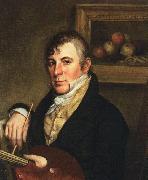 |
Portrait of Raphaelle Peale |
1822 |
| 4262 |
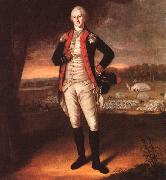 |
Portrait of Walter Stewart |
1781 |
| 91459 |
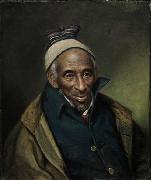 |
Portrait of Yarrow Mamout |
oil on canvas. 24 x 20 inches (61 x 50.8 cm). Philadelphia Museum of Art
Date 1819(1819)
cyf |
| 4263 |
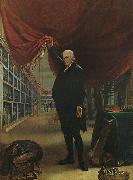 |
The Artist in his Museum |
1822
Pennsylvania Academy of Fine Arts |
| 4267 |
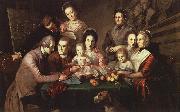 |
The Peale Family |
1809
New York Historical Society |
| 4259 |
 |
The Staircase Group |
1795
Philadelphia Museum of Art |
| 45290 |
 |
The Staircase Group |
mk181
1795
Philadelphia
|
|
|
| Charles Wilson Peale
|
| 1741-1827
Charles Wilson Peale Galleries
Finding that he had a talent for painting, especially portraitures, Peale studied for a time under John Hesselius and John Singleton Copley. Friends eventually raised enough money for him to travel to England to take instruction from Benjamin West. Peale studied with West for two years beginning in 1767, afterward returning to America and settling in Annapolis, Maryland. There, he taught painting to his younger brother, James Peale, who in time also became a noted artist.
Peale's enthusiasm for the nascent national government brought him to the capital, Philadelphia, in 1776, where he painted portraits of American notables and visitors from overseas. His estate, which is on the campus of La Salle University in Philadelphia, can still be visited. He also raised troops for the War of Independence and eventually gained the rank of captain in the Pennsylvania militia by 1777, having participated in several battles. While in the field, he continued to paint, doing miniature portraits of various officers in the Continental Army. He produced enlarged versions of these in later years. He served in the Pennsylvania state assembly in 1779-1780, after which he returned to painting full-time.
Peale painted in the trompe l'oeil style,[1] and was quite prolific as an artist. While he did portraits of scores of historic figures (such as John Hancock, Thomas Jefferson and Alexander Hamilton), he is probably best known for his portraits of George Washington. The first time Washington ever sat for a portrait was with Peale in 1772, and there would be six other sittings; using these seven as models, Peale produced altogether close to 60 portraits of Washington. In January 2005, a full length portrait of "Washington at Princeton" from 1779 sold for $21.3 million dollars - setting a record for the highest price paid for an American portrait.
Peale had a great interest in natural history, and organized the first U.S. scientific expedition in 1801. These two major interests combined in his founding of what became the Philadelphia Museum, and was later renamed the Peale Museum.
This museum is considered the first. It housed a diverse collection of botanical, biological, and archaeological specimens. Most notably, the museum contained a large variety of birds which Peale himself acquired, and it was the first to display North American mammoth bones.
The display of the mammoth bones entered Peale into a long standing debate between Thomas Jefferson and Comte de Buffon. Buffon argued that Europe was superior to the Americas biologically, which was illustrated through the size of animals found there. Jefferson referenced the existence of these mammoths (which he believed still roamed northern regions of the continent) as evidence for a greater biodiversity in America. Peale's display of these bones drew attention from Europe, as did his method of re-assembling large skeletal specimens in three dimensions.
The museum was among the first to adopt Linnaean taxonomy. This system drew a stark contrast between Peale's museum and his competitors who presented their artifacts as mysterious oddities of the natural world.
The museum underwent several moves during its existence. At various times it was located in several prominent buildings including Independence Hall and the original home of the American Philosophical Association.
The museum would eventually fail in large part because Peale was unsuccessful at obtaining government funding. After his death, the museum was sold to, and split up by, showmen P. T. Barnum and Moses Kimball.
|
|
 All the Sandro Botticelli's Oil Paintings
All the Sandro Botticelli's Oil Paintings

Supported by oil paintings and picture frames

Copyright Reserved
|

